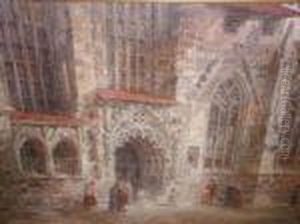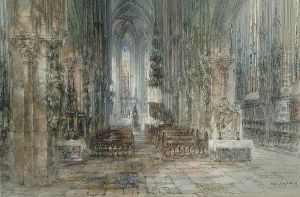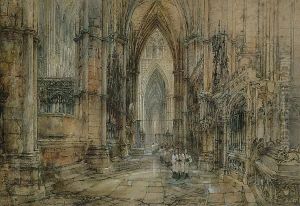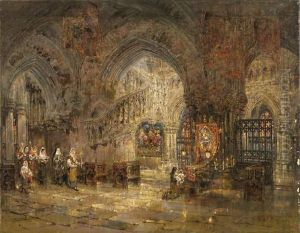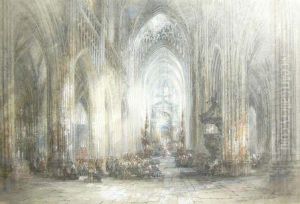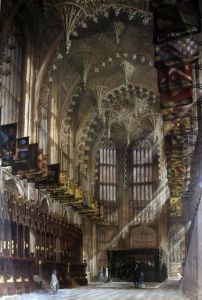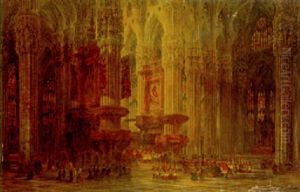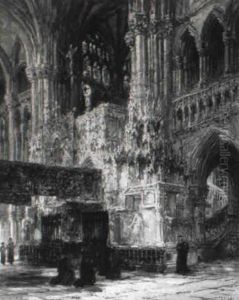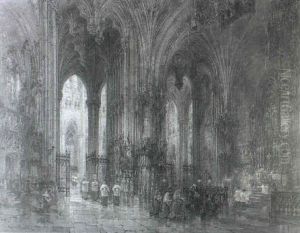Wyke Bayliss Paintings
Wyke Bayliss was a British painter, author, and poet, known primarily for his paintings of cathedrals and other architectural subjects. Born on October 21, 1835, in Madeley, Shropshire, he was the son of Thomas Mann Bayliss, an engineer, and his wife, Ann. He had a brother, Sir Wynton Bayliss, who was a notable scientist.
Bayliss initially pursued a career in civil engineering under the influence of his father but eventually turned to art. He studied at the Royal Academy Schools, where he developed his artistic skills and began to establish himself as a painter. Bayliss traveled extensively throughout his life, which greatly influenced his work. His travels took him across Europe, particularly to Italy, where he was inspired by the grandeur of its ancient and Renaissance architecture.
Throughout his career, Bayliss exhibited at the Royal Academy and also at the Royal Institute of Painters in Water Colours, of which he became President in 1889. His paintings are characterized by their meticulous detail, vibrant color, and the ability to capture the atmosphere of the architectural subjects he chose to depict. Bayliss had a particular interest in the aesthetic and spiritual qualities of church and cathedral interiors, which is reflected in many of his works.
Aside from his painting, Wyke Bayliss was also an accomplished writer. He authored several books, including 'The Enchanted Island' (1892), 'The Higher Life in Art' (1904), and 'Rex Regum' (1898), a poem about the life of Christ. His writings often explored the relationship between art and spirituality, echoing the themes present in his visual art.
Wyke Bayliss' contributions to the art world were recognized in his time, and his works continue to be appreciated by those who value the intertwining of art and architecture. He passed away on April 5, 1906, leaving behind a legacy of detailed and atmospheric representations of some of Europe's most significant architectural masterpieces.
